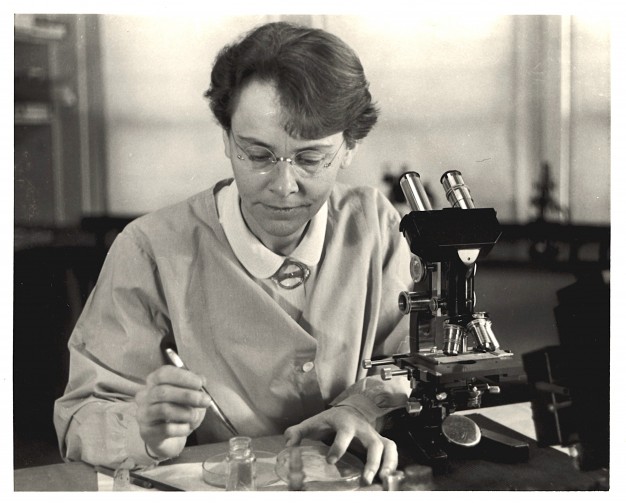Barbara McClintock’s Early Scientific Ephemera
American scientist and cytogeneticist Barbara McClintock (1902-1992) was a pioneer in genetics research in the early 20th century, a time when few women worked in the field. Of the many professional organizations she belonged to, McClintock became a member of the American Philosophical Society in 1946, and we are fortunate that she chose to donate her papers to the Society in 1992.
McClintock attended Cornell University, where she earned her bachelor’s and master’s degrees in Botany (1923 and 1925, respectively), as well as her Ph.D. in 1927. Cornell’s School of Agriculture provided a good foundation for a career in plant-based science.

This early chapter in McClintock’s career can be illustrated through the ephemera found in her papers. An example of this is the “Simplex Soil Test Outfit” brochure pictured above. Based on correspondence in her “Techniques” folder, it appears that McClintock used this test kit in Cornell’s corn fields in the 1930s. The results helped her determine the soil composition, pH, mineral content, etc. Correspondence with the Simplex company is also in the folder, which revealed their analysis of the Cornell test beds, and possible amendments that could be made to the soil, to affect crop yields.
This is one example of McClintock as a young scientist, exploring the relationship between genetic inheritance and environmental factors (or nature versus nurture). This kit and its related documentation provide some insight into her process and how she worked with the testing methods at the time.
Throughout McClintock’s graduate study, dissertation, and postgraduate work in botany, she studied with cytologist Lester Sharp. Together they helped to develop the emerging field of maize cytogenetics, or the study of corn plants on a cellular level.
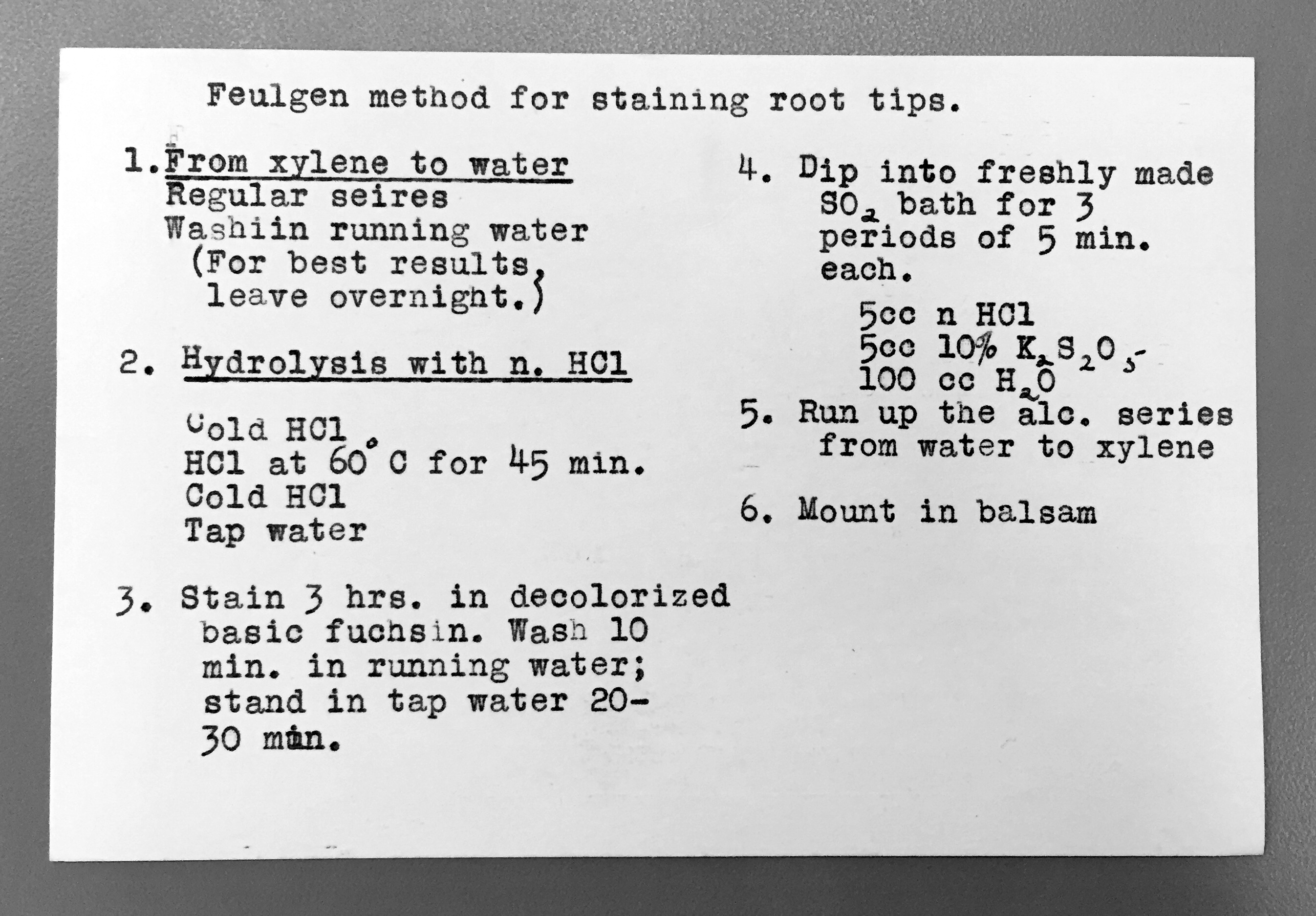
To this end, I was glad to find McClintock’s method for staining slide specimens (also in the “Techniques” folder), as her innovative use of microscopic analysis with maize chromosomes eventually helped her demonstrate many fundamental ideas related to maize cytogenetics.
McClintock started using a new acetocarmine staining process in the 1930s. This innovative process allowed her to observe how recombined genes in chromosomes correlated with new physical traits, such as color variations in corn kernels. Until this point, it had been hypothesized that genetic recombination could occur during cellular division, but it had not yet been visually demonstrated.
This staining technique allowed her to create the first genetic map for maize in 1931, which showed the order of genes on corn chromosomes. This contribution laid the foundation for connecting chromosomal changes to the physical properties of an organism, and had further implications for genetics research for both McClintock and her colleagues.
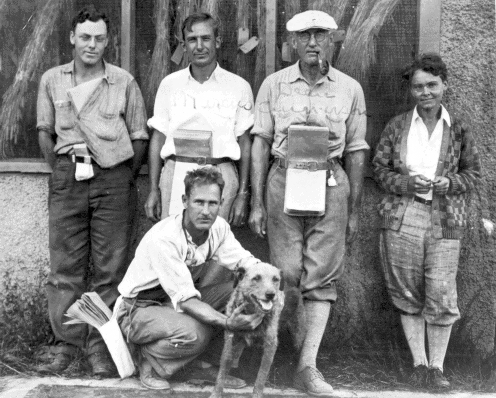
The Maize Genetics Group at Cornell was particularly influenced by her findings and participated in related studies. As shown above, this cohort brought together cytologists, geneticists, and plant breeders, and included (left to right): Charles Burnham; Marcus Rhodes; George Beadle (kneeling); Rollins A. Emerson, who was in charge of the Plant Breeding Department; and McClintock herself.
Their primary focus was to assign linkage groups to maize chromosomes and to correlate physical characteristics to genetic behavior, such as gene breakage and recombination. This fruitful collaboration paved the way for McClintock’s subsequent discoveries about mobile genetic segments and controlling units. These theories, in turn, helped future researchers better understand how genetic changes like mutation can occur, which ultimately impacted future medical research and our understanding of evolution.
By the way, please note the brown paper bags the scientists have tucked in their belts and hip bags. They were used to gather samples from the test fields.
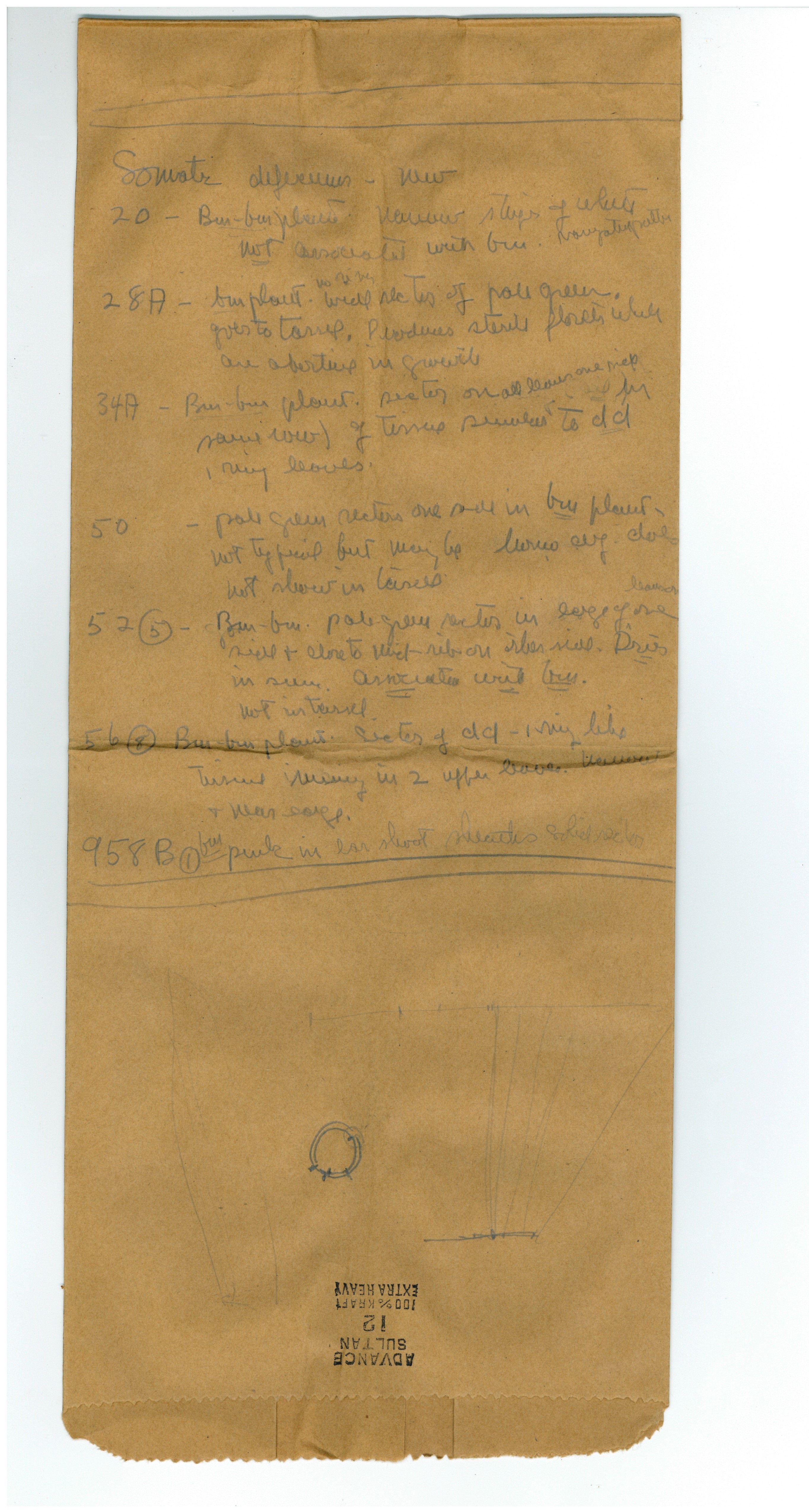
|
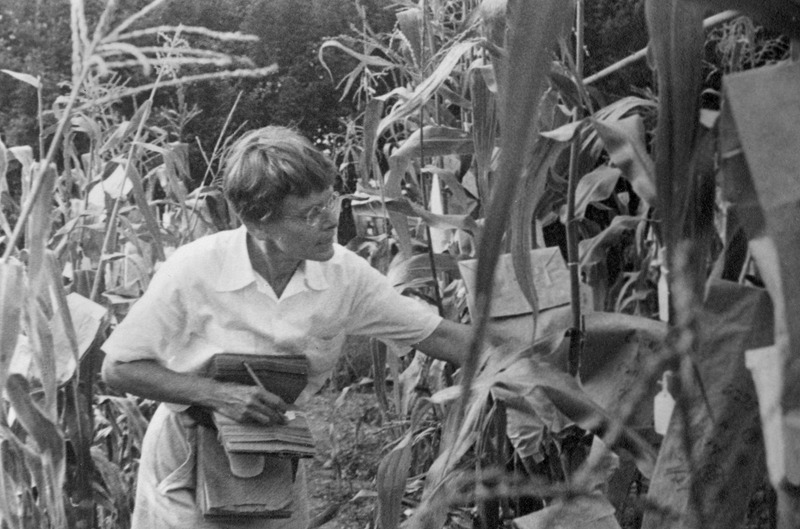
|
And yes, we still have brown paper bags used by McClintock and her colleagues to gather specimens. Interestingly enough, this humble piece of ephemera, “Paper Bag #23” (illustrated on the left) has actually gotten some mileage in special collection circles. It was borrowed by the esteemed Grolier Club in 2016 for their Women in Science exhibition. This shows how something as simple as a paper bag can convey something important about a scientist and her research methodology. It was selected for display because of the informational value of the research notes on the exterior, as well as its intrinsic value, since it is associated with McClintock and her work (illustrated on a postcard, on the right).
These archival materials, with many more to discover, enable researchers to learn more about McClintock -- from everyday circumstances to her extraordinary achievements. McClintock was the first woman to individually win the Nobel Prize for Physiology or Medicine in 1983 for her discovery of mobile genetic elements. The APS is proud to serve as the repository for the papers of this distinguished scientist and member.


